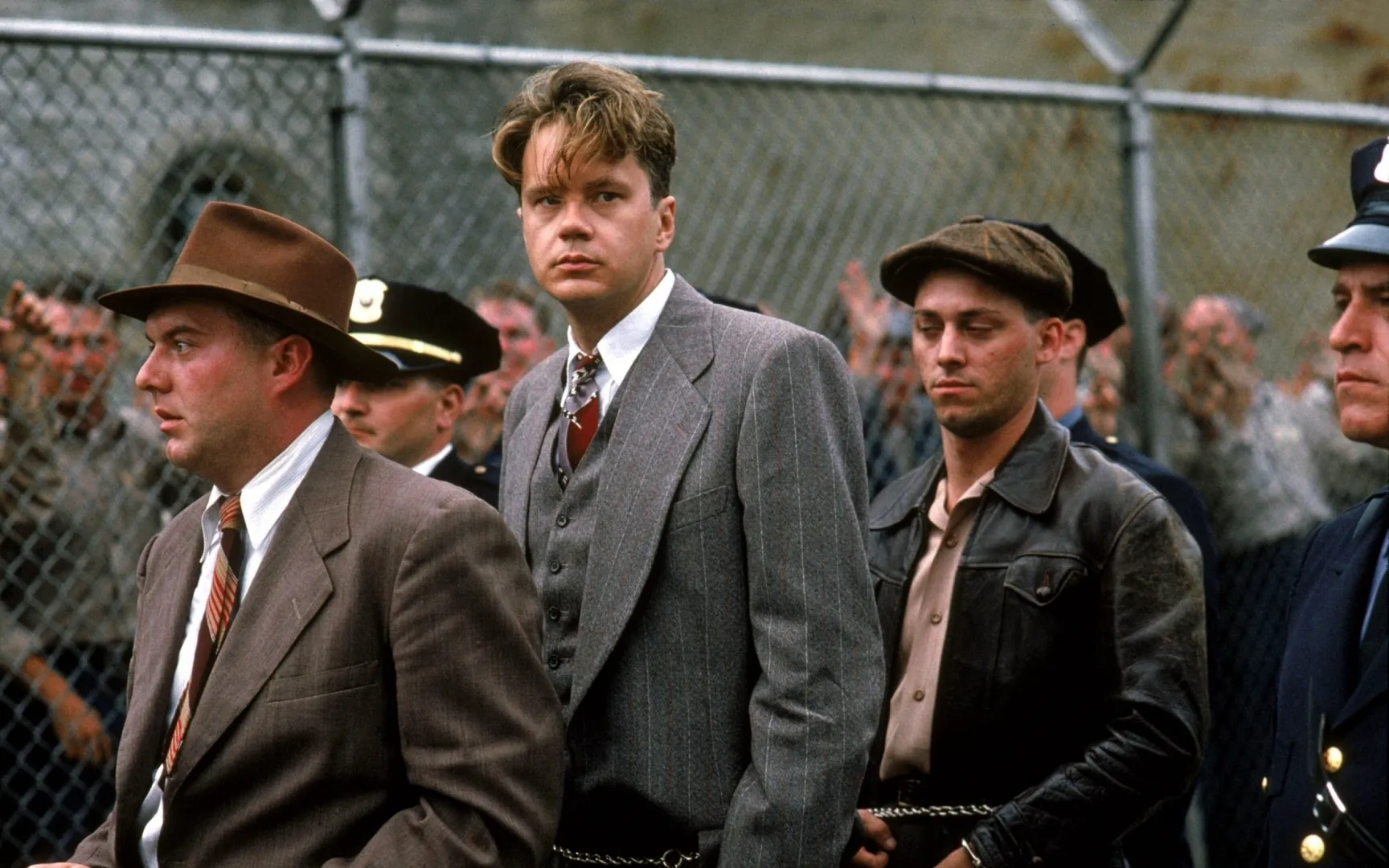The Shawshank Redemption: More Than Just a Prison Escape
Darabont managed to infuse King’s story with a considerable dose of old-fashioned Hollywood respectability, which suited a work written with an eye on classic Hollywood.
Frankly, instead of discussing the film in a historical context, the following should be printed in large letters: “The Shawshank Redemption,” after years of rivalry with “The Godfather,” has become the number one film according to imdb.com user ratings. Almost half a million people voted, and more than half of them gave it the highest rating. What more could a filmmaker dream of?
This rating from anonymous online users, rather than the sentimental story of a prison accountant with two life sentences, is the main plot and drama of the film. Whether writer Frank Darabont (“The Shawshank Redemption” was his directorial debut) set out to resonate with millions or not, the main thing is that he succeeded. Moreover, Darabont managed to solve an even more difficult task: he showed what the ideal adaptation of Stephen King should be. Before him, only Brian De Palma (“Carrie”) managed to see in King’s prose material for a full-fledged cinematic statement. The rest, even the most pompous adaptations of the writer, are nothing more than solid, crafted works with creepy oddities in the script.

It was hard to expect this from the screenwriter of numerous “Tales from the Crypt,” “A Nightmare on Elm Street 3,” and “The Fly II,” but Darabont managed to infuse King’s story with a considerable dose of old-fashioned Hollywood respectability, which suited a work written with an eye on this very Hollywood. Selling the rights for one dollar to his friend Frank Darabont, the author admitted that he wrote the story “Rita Hayworth and the Shawshank Redemption” as a tribute to classic prison dramas – “cool hand Lukes,” escaped convicts, and other Alcatraz inmates. So, Darabont only had to push the ingenious plot twist with the escape into the background – until the very end, nothing foreshadows the outcome mentioned in the title – and focus the optics on human relationships.
As the perceptive Roger Ebert noted: “It’s amazing to say this about a prison drama, but ‘The Shawshank Redemption’ fills the viewer’s heart with warmth and makes you feel like a member of a large, loving family.” Well, it’s hard to disagree with him. The main character of the film, financial genius Andy Dufresne, lives under the guise of a bookworm and altruist, and “The Shawshank Redemption” itself very successfully pretends to be a tough story, being, in fact, a melodrama for family use. The noble voice-over of Morgan Freeman and the measured pace, which the director diligently maintains, provide the necessary coefficient of softness in the aggressive penitentiary environment.

Life Inside Shawshank
Neglecting the harsh nature, Darabont focused on everyday affairs. Instead of preparing to escape from the most terrible prison, we watch gatherings in the dining room, walks in the yard, the first attempts at socialization, and fights with sexually active jocks. Like in school. Time is measured by posters in Andy’s cell. First, Rita Hayworth (“Gilda,” 1946), then Marilyn Monroe (“The Seven Year Itch,” 1955), and then Raquel Welch (“One Million Years B.C.,” 1966): a wonderful teenage set, three women who illuminated the dark, isolated male kingdom.
A Father-Son Conflict
Evaluate the central conflict: an uncompromising dispute with the strict “father” – the warden of Shawshank – for the right to leave his father’s house. Andy, running from a prison that has become his home (or maybe from a home that has become his prison), is essentially born into a new life. He slips past the “girl next door” Raquel Welch hanging on the wall, overcomes the cleansing kilometers of the sewer pipe. Like yesterday’s tenth-grader, he rushes to Mexico, to the sea, to the sun. Twenty years have passed. It’s time to live your life.